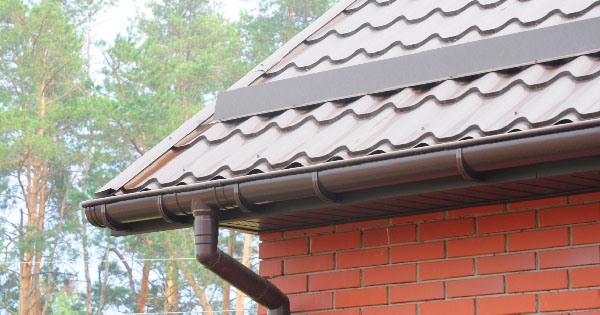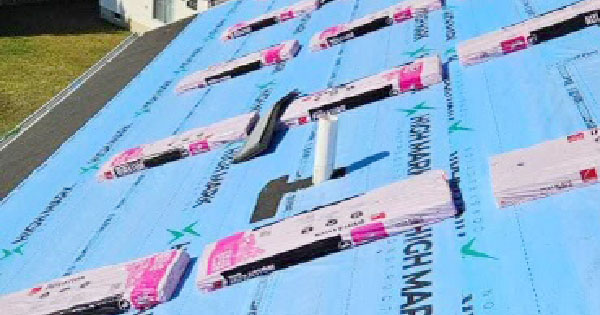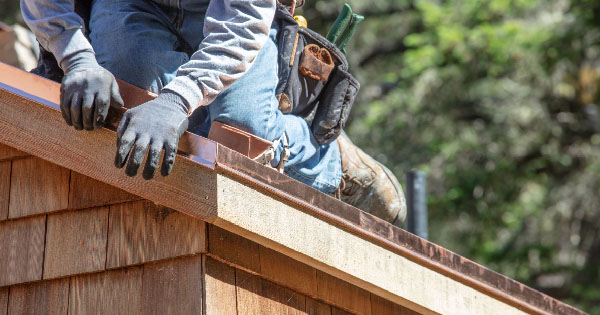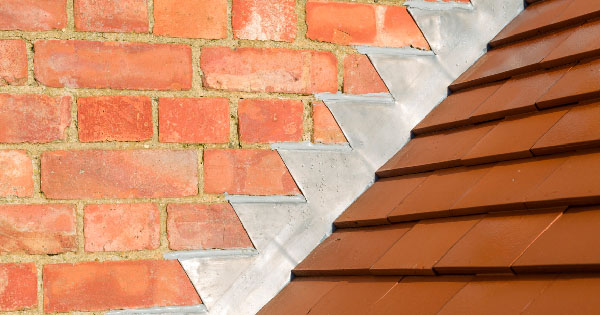The browser you are using is not supported. Please consider using a modern browser.

A Maryland Homeowner’s Guide to Roofing Code Requirements.

Roofing code requirements can seem complex, but understanding and adhering to them is about more than compliance.
Roofing codes safeguard your home against the elements.
Homeowners and homebuyers need to be aware of these codes to keep their homes well-protected, durable, and energy-efficient.
By complying with residential roofing codes—and partnering with a certified contractor who adheres to state and national standards—you’ll increase the durability and lifespan of your roof and home.
Maryland Roofing Codes Overview
Maryland’s roofing codes ensure the longevity, safety, and efficiency of roofing systems across the state.
These regulations encompass a broad range of standards.
Each aspect is meticulously outlined to promote durable and environmentally responsible roofing practices, aligning with the latest national standards.
Life Cycle Cost Analysis
In Maryland, new building projects require a comprehensive 60-year life cycle cost analysis.
A life cycle cost analysis for roofing evaluates the total cost of a roof over its expected life, considering installation, maintenance, repair, and potential energy savings.
This analysis guarantees that the selected steep or low-slope roof system is cost-effective over its lifespan.
Roof Slope and Drainage

Maryland mandates that roofs on new homes should be designed with slopes that ensure water goes toward drains or gutters.
This design achieves optimal water management and maintains the structural integrity of a building.
For replacements, you should consider your home’s design to accommodate or enhance rooftop draining and protect against water damage.
Material Standards
The Maryland roofing codes stress using asbestos-free materials in all roofing systems for safety and adherence to national standards.
This approach ensures that roofing practices meet high quality and safety standards, reflecting the state’s commitment to durable and environmentally responsible construction methods.
Specific Residential Roofing Codes
Understanding residential roofing codes helps homeowners and homebuyers make sure their homes are built or maintained to the highest standards.
These codes cover essential aspects of roofing—all designed to enhance your roof’s durability, safety, and efficiency.
Each code plays a specific role in protecting and extending the life of your home and roof.
1. Shingle Underlayment

Shingle underlayment is a critical component in roofing systems, serving as an additional barrier against water intrusion.
It’s installed between the roof deck and the shingles, offering protection from water that can seep through shingles due to rain, ice dams, or other sources of moisture.
The underlayment plays a vital role in extending the roof’s lifespan by preventing water damage to the roof structure and the interior of the building.
2. Drip Edge

The drip edge is crucial in roofing systems, acting as metal flashing installed at the edges to direct water away from the fascia and beneath the shingle layers.
It prevents water damage by ensuring runoff flows off the roof and into the gutters rather than seeping into the roof deck or walls.
Roofing codes mandate proper drip edge installation to protect the structure from water intrusion.
3. Ice & Water Shield Code

The ice and water shield is vital in roofing, particularly in areas prone to ice formation along eaves.
This barrier prevents water backup caused by ice dams.
It must extend from the roof’s edge to a minimum of 24 inches inside the exterior wall line, offering enhanced protection against water intrusion.
4. Flashing

Flashing is crucial for directing water away from where the roof meets walls.
Roof-to-wall flashing and sidewall flashing must be at least 4 inches in height and width, allowing water to flow onto the roof or into gutters, not behind the siding or masonry.
For homes with siding, flashing extends under it.
Homes with masonry have specific guidelines and roof-to-wall flashing details to protect against water intrusion.
5. Ventilation

Compliance with roof ventilation code requirements helps maintain the integrity of the roof structure and the comfort of the building’s interior.
Adequate ventilation minimizes temperature extremes and moisture accumulation in the attic space, which can lead to roof damage over time.
Ventilation code requirements keep a balanced airflow that protects the roof and attic against potential issues related to poor ventilation.
Finding the Right Contractor
Residential roofing codes are essential for the longevity of your roofing system and the safety of your home’s occupants.
You need an experienced and certified contractor to help ensure your home meets Maryland’s roofing standards.
At High Mark Construction, we specialize in identifying early damage to roofs and delivering unparalleled craftsmanship.
By adhering to state and national roofing standards, we guarantee your home’s exterior complies with all necessary codes, enhancing the longevity and safety of your roof and home.
Protect and maintain your home—schedule a free roof inspection today.